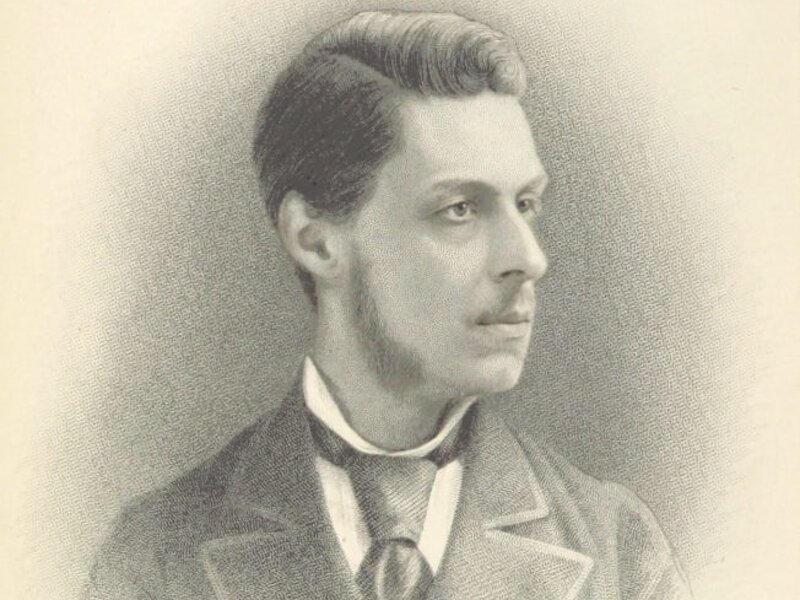“After breakfast I visited the falls a day never to be forgotten” are the words that Frank Oates wrote on seeing Victoria Falls on New Year’s Eve in full thundering flood in 1875. How extraordinary that he wrote so few words on reaching
his objective that had taken him on a laborious back breaking journey by ox- cart across South Africa and Bechuanaland.

Sadly, On 25th January, travelling with a Mr. Bradshaw, Oates showed the first signs of malaria and became gravely ill. He died on the evening of February the 5th 1875.
The ground was too hard to dig a grave and the wagon did not have the necessary digging tools. Bradshaw sought the help of Boer hunter Piet Jacobs who knew the area well and Frank was buried in an old game pit on the banks of the Tjwigwetjane River. Piet Jacobs marked Frank’s grave with a cairn of stones.
This was not to be his final resting place and only recent history has cast a light on the mystery and intrigue that has surrounded his grave for generations.
Frank Oates, the uncle of Lawrence Oates who died on Scott’s ill-fated Terra Nova expedition, famed for saying “I am just going outside and may be some time.” had a passion for natural history, adventure and exploration. From
a young age he was an avid collector of plants, insects, reptiles, birds and mammals. He kept detailed notes of his travels and hunting expeditions and made sketches of the plants and animals he encountered on his travels. He made it his mission to see the Falls for himself and with his brother William, arrived in South Africa in March 1873 and immediately set off for the interior, where they explored and hunted in the areas controlled by the Bamangwato and
adjacent Matabeleland.

Oates had made several attempts to see the Falls, but these had was thwarted by wheel failure on his wagon and/or lack of cooperation from local inhabitants. It is sometimes stated that Oates was the second European to witness the Falls after Livingstone who reached them in November 1855.
However, it can be argued that Livingstone was almost certainly not the first European to reach the Falls. A Portuguese traveller named A. da Silvo Porto visited much of the Zambezi area from 1848 some seven years before Livingstone. The extent of his wanderings were lost when his diaries were burned in the great fire of Lisbon. Other unknown Portuguese could have also seen the Falls ‘first’ especially as many of them lived in places like Tete in the 1600’s. Early Arab traders may well have been to the Falls on their slave trading expeditions.
In 1934, a member of the Oates family sought help from the Pioneers and Early Settlers Society in Bulawayo to locate the grave which was done with the help of James Haskins who had a trading store nearby. While the cairn of stones could be located the white headstone was gone. In 1935 at the suggestion of Haskins, an iron cross with a circular plaque was cast by H.G. Issels of Bulawayo as well as railings to protect the grave from elephants.
In 1945, Frank Oates, another member of the family contacted the society, as he wished to visit the grave of his
great uncle. Sir Robert Tredgold Judge President of Rhodesia heeded the request and set about in earnest trying to locate the grave Following a 10 year search, the grave was “refound” in 1955 by R Tapson, Native Commissioner at Plumtree, with the help of an old Kalanga man, Leburu, who guided the commissioner to the site. When Tredgold and Tapson visited the site, a very old African gentleman appeared who told them that he had erected the cross and later the railings on the instructions of a white man from the police in Francistown. However, the old man pointed to a mound of rocks some 50 yards away and that the bones of Oates lay under the mound and not under the railings.
During a heavy storm some years later, floodwaters eroded open the mound of stones, exposing the bones and with the help of two locals the remains of Frank Oates were interred at the iron plaque erected by the Pioneer Society.

Again the grave was as good as forgotten, moreover it was extremely difficult to locate. Today, less than a handful of people know where to find the grave. Fortunately one of those is Mike Barter who will be accompanying us in September 2020 to the graveside.
The grave is situated in Botswana, and not Zimbabwe, and lies some 80 km north of Francistown north of the town of Kalakamati on the boundary of the Eastern and Central Districts of Botswana.
There is a poignant footnote to this story.
 Frank travelled with his two canine companions Rail and Rock. When Frank died Rail went missing. Dr Bradshaw
Frank travelled with his two canine companions Rail and Rock. When Frank died Rail went missing. Dr Bradshaw
who was travelling with Oates searched for the beloved Pointer who was found to have run through the bush some
80 miles and was found guarding his owner’s grave stone. Rail and Rock came back with Bradshaw to England, and in
1880, five years to the day that Frank Oates died Rail passed away followed soon by Rock three weeks later.
References:
Dr Mark Berry
Dr Michael Barter
The Gilbert White Museum that holds the Frank Oates
collection.

